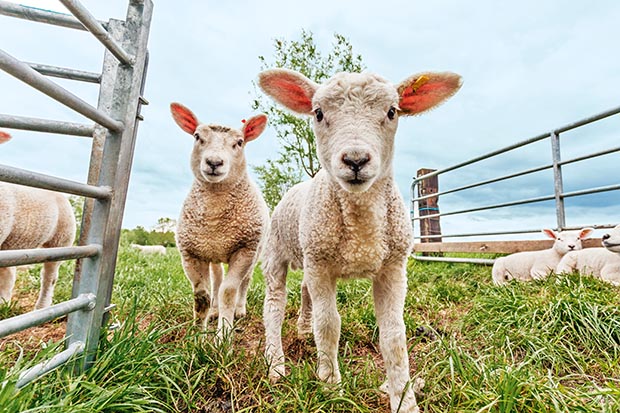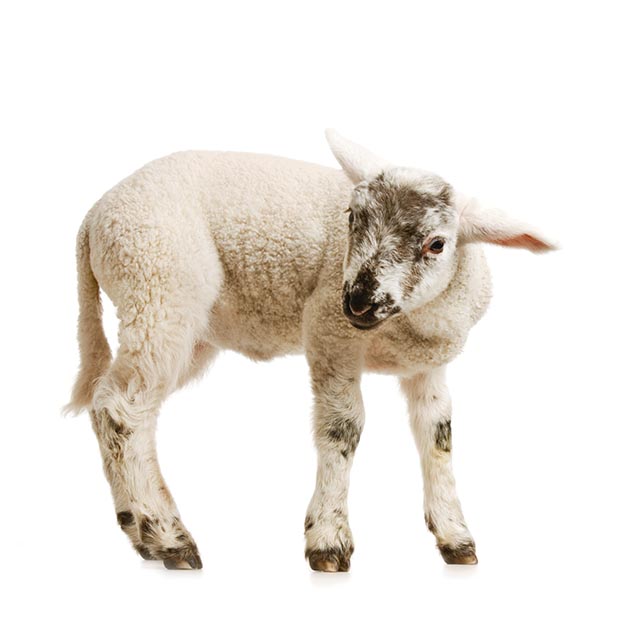1 easy way to save a cold, wet lamb

One simple injection can be a life-saver for cold or weak lambs.
Words www.beeflambnz.com
Lambs born during a heavy cold snap can exhaust their energy stores just trying to keep warm. They quickly become too weak to feed off their mother and so they can starve and die.
But injecting a 20% mix of dextrose directly into the lamb’s abdomen can give them the energy boost they need to survive. This technique is known as an intra-peritoneal injection and it can be done by the farmer, on the spot, and gives good results.
WHEN TO INJECT LAMBS
Inject lambs with dextrose who are too cold or weak to feed off their mother. You must do this before you warm the lamb; if you warm the lamb before you ‘fuel’ it, you will hasten its death.
Give the injection when the lamb is over four or five hours old – lambs younger than this should still have enough energy stores to recover when warmed.
Note: it is not a disadvantage to inject new lambs, but warming them should be enough.

WHAT TO DO
OPTION 1
• Inject sterile 20% dextrose mix directly into the lamb’s abdomen. You can buy it ready-made to this concentration, in a 500ml flexibag with an attached draw-off tube. Alternatively, use 40% Dextrose diluted at a ratio of 1:1 with sterile water.
• Connect a 5ml or 10ml vaccinating gun to the draw-off tube or extract the dextrose using a 60ml syringe.
• Use a 10mm 18G vaccinating needle – it must not be longer than 12.5mm (1.25cm).
• The dosage rate is 10ml of dextrose per kilo of lamb weight. The most susceptible are small newborn lambs that weigh less than 4kg, so you should inject 40ml.
• Warm the dextrose if possible, although it still works if you don’t.
• Hold the lamb between your legs or lie it on the ground, then spray the area to be injected with iodine.
• Push the needle in, just in front of the navel, about 2cm above the navel and 2cm off the midline of the lamb, pushing in at a slight angle towards the chest (you can see the site on this link). You may feel a popping sensation as the needle pierces the abdomen.
• Inject the solution – if you see a swelling occurring under the skin, the needle is not in far enough.
OPTION 2
The injection directly into the abdomen with 20% dextrose gives the best results as it works more quickly, and is faster to do. However another option to get energy into the lamb is to inject dextrose saline under the skin, known as a subcutaneous injection.
• Prepare a vaccinating needle or syringe with dextrose saline (note, this is not the same as 20% dextrose)
• Inject 30ml/kg of lamb weight subcutaneously around the ribs, on both sides of the lamb, and rub the site.
WHAT FOLLOW UP IS REQUIRE?
After giving the lamb dextrose and warming it up, it should become more active and ready to feed. Place back with the ewe if she is happy to take it. However keep an eye on it – it may become an orphan lamb. A lamb cover can also help improve the lamb’s chances of survival.
WHAT IS DEXTROSE?
Dextrose is a naturally-occuring form of glucose. This simple sugar can be easily and quickly taken up by the body and used for energy. Talk to your vet about having a supply available for use ahead of time.
INJECT LAMBS
• who have not fed since birth
• who are cold and weak
• before warming them
WHAT YOU NEED IN A LAMBING KIT

At lambing time, it is helpful to have everything you need in one spot. Use a waterproof backpack or container (like a fishing tackle box) to hold all the necessary lambing equipment and keep it clean and dry. Backpacks are useful to keep hands free if you’re on a hill and/or on your own trying to catch lambs and ewes.
THINGS TO INCLUDE IN YOUR KIT:
• 20% Dextrose mix in a flexi bag with a tube attachment
• Vaccinating gun with a box of sterile 3/8 inch needles and spare box for dirty needles or, if preferred, a syringe with a 3/8 inch needle
• Thermos or bowl to warm dextrose (optional)
• Iodine spray to sterilise abdomen
• Towel to dry off lamb
• Lamb covers (eg, Woolover) which cost about $4-$5 and are washable and re-useable.
• Antibiotic injection for ewes with birthing difficulties (in consultation with your veterinarian)
• Bearing equipment which may include: baling twine, needle and string or plastic bearing retainer
• Oral energy drench for ‘downer’ ewes after a difficult labour
• Hand disinfectant for lambing ewes
• Synthetic gloves to help birthing
• Veterinary lube
• Marker chalk or raddle to identify ewes and lambs that have had treatment
Love this story? Subscribe now!
READ MORE
 This article first appeared in NZ Lifestyle Block Magazine.
This article first appeared in NZ Lifestyle Block Magazine.

